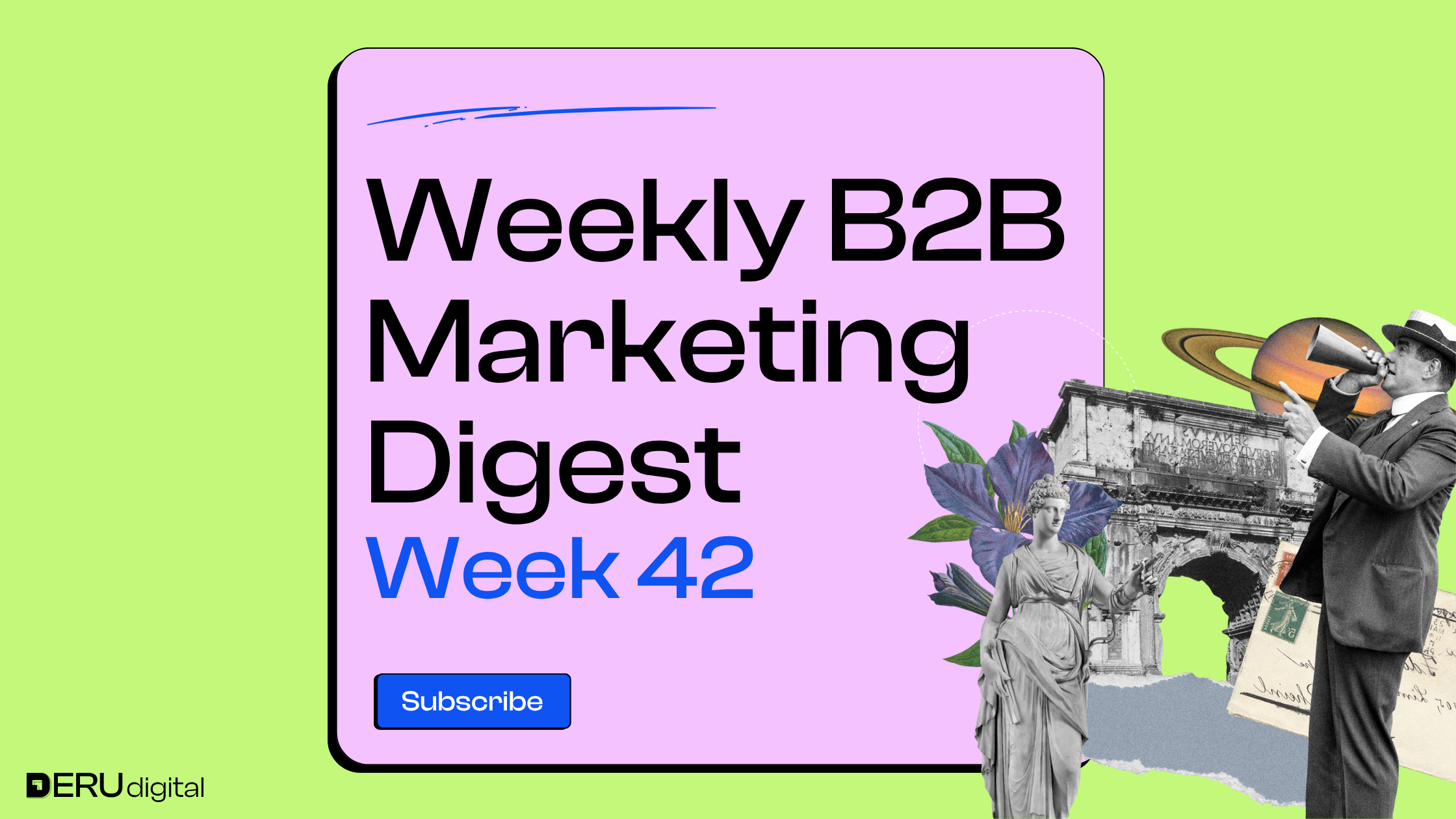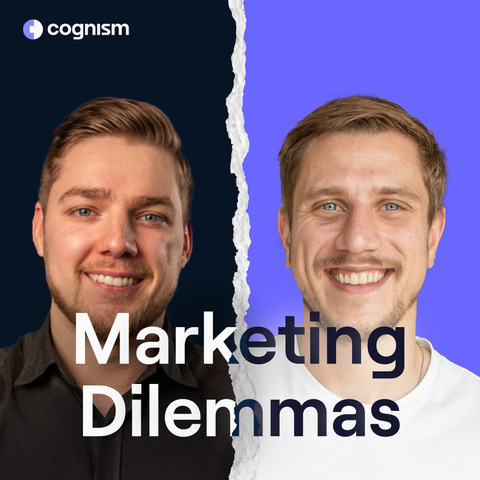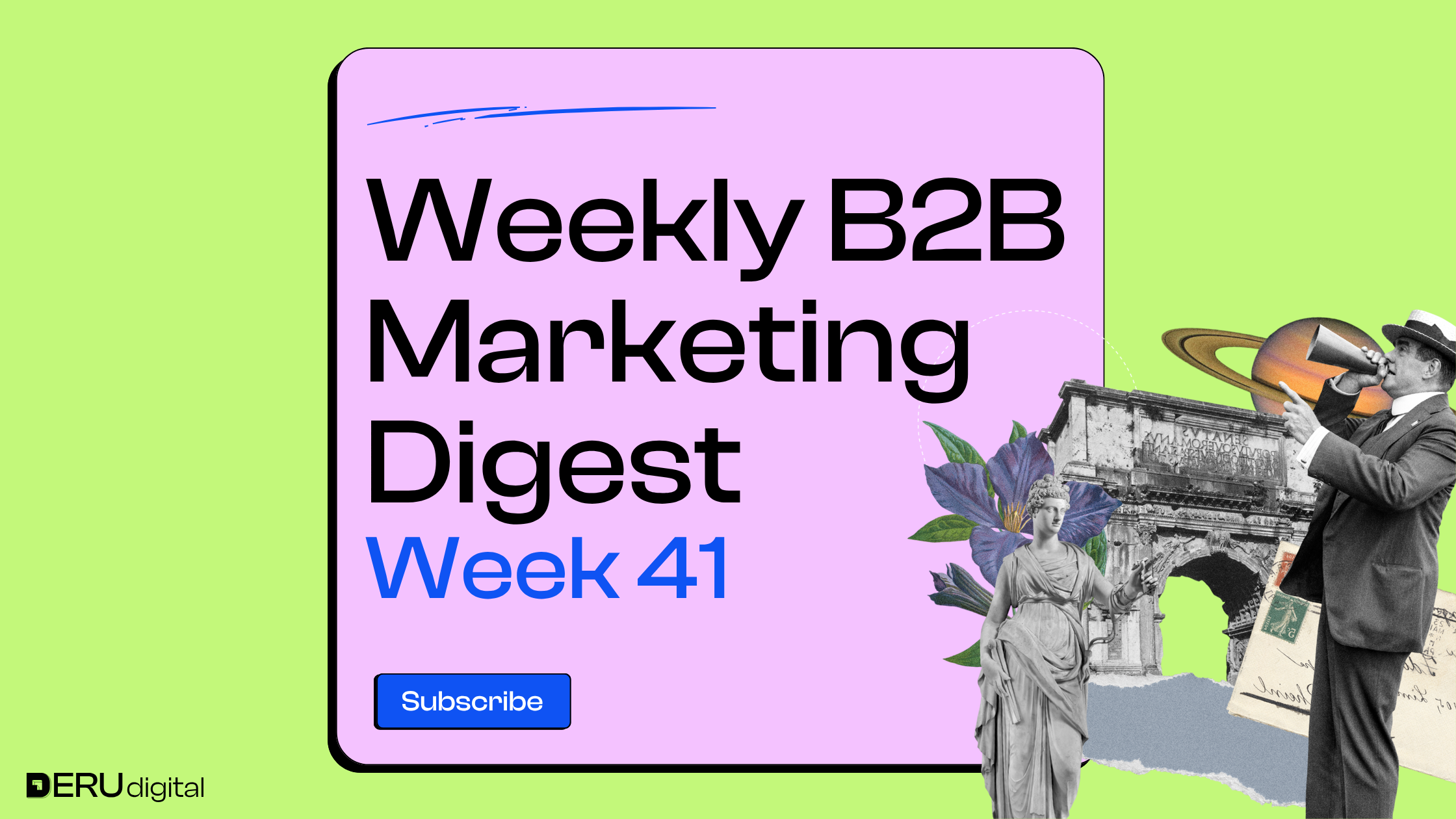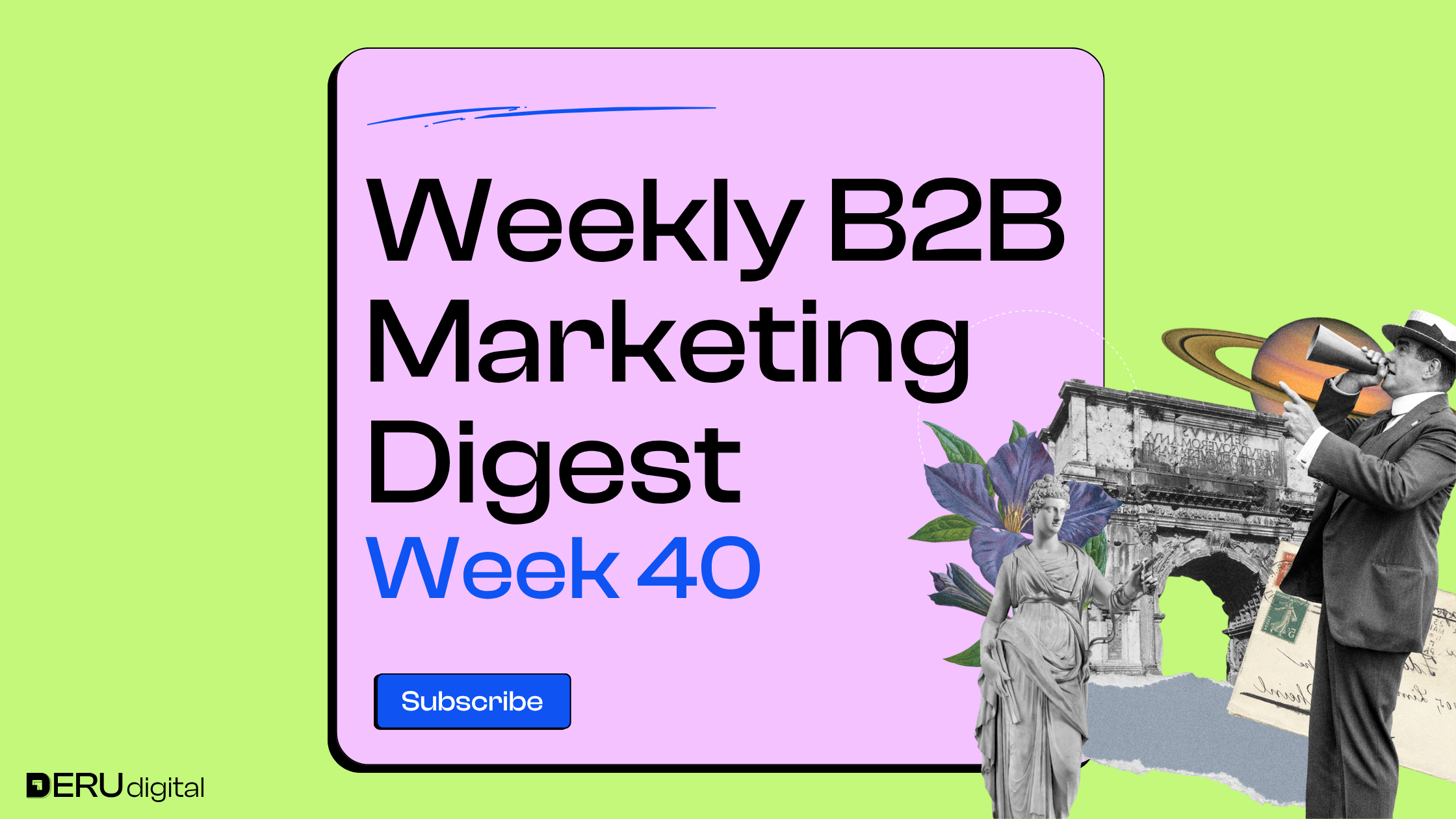INSIGHTS FROM EXPERTS ON LINKEDIN
Dawid Wroński shared how he uses Fibbler, Clay, Google Sheets, and Looker to track ad engagement across target accounts. The setup pulls LinkedIn Ads data into dashboards that show weekly trends in clicks, impressions, and engagement. He’s also built a bigger view by adding other sources like website visitors and followers — with one tip: don’t mix feed campaign data with spotlight or text ads, or you’ll skew the numbers.
Liam Moroney explained why the term “demand generation” doesn’t match how marketing really works. He said it treats marketing like a linear process where demand is created and captured, when in reality buying decisions are messy, non-linear, and fully controlled by the buyer. He believes marketers need to drop this outdated language if they want to think more clearly about how people actually buy.

Jonathan Bland shared that before running ads or sending cold emails, he’d start ABM by building relationships through content collaboration. Inviting prospects to join a podcast, co-create a guide, or speak on a panel helps create trust and visibility before any sales pitch. It’s a more natural way to connect with the right accounts, one that pulls people in instead of pushing a demo too soon.
Philip Ilic dug into $300K worth of LinkedIn Thought Leader Ads (and spent £16K of his own money) to figure out why most people are running them wrong. He put together a playbook showing what to boost, when to use Engagement vs. Brand Awareness, and how to actually turn views into pipeline. It’s a hands-on breakdown for anyone trying to get better results from their LinkedIn ads.

Peter Buckley explained that most marketing fights over just 0.2% of buyers, the small group who are in-market, open to switching brands, and likely to click. He makes the case that brands should focus more on building awareness and preference with the 99.8% who aren’t ready to buy yet. That’s where long-term growth really happens, especially as AI tools start shaping how people choose brands.
Ognjen Bošković pointed out how easy it is for big names like PayPal or HubSpot to win engagement online – their logos do most of the work. But smaller SaaS founders can’t rely on the same playbooks and expect the same results. He suggests that early-stage companies need a different approach that fits their scale and audience instead of copying what works for billion-dollar brands.
WHAT'S NEW IN THE INDUSTRY
Google’s rolling out ads inside AI Overviews to more English-speaking markets by the end of 2025, moving beyond its U.S. launch. That means ads will start appearing right alongside AI-generated answers instead of just the usual text results. For advertisers, it’s a big shift. Blending paid placements into conversational search could open new opportunities, but it’ll also take some experimenting to figure out what really works.
Google’s testing a new feature in Demand Gen campaigns that lets you optimize for conversions that happen after someone sees your ad, not just when they click it. It’s great news for YouTube advertisers, where engagement often builds over time. The idea is to help brands train algorithms faster, understand their true upper-funnel impact, and get more value out of creative campaigns, a move clearly aimed at catching up with Meta and TikTok.

Performance Max campaigns just got a creative upgrade with support for vertical 9:16 image ads perfect for YouTube Shorts and other mobile-first spaces. It’s a small but meaningful update that helps brands show up where people actually scroll and watch. As short-form content keeps dominating screens, vertical formats like this are becoming essential for keeping ads feeling natural, not forced.

Google just dropped version 22 of its Ads API, and it’s packed with new AI-powered tools for faster campaign building and smarter optimization. The update adds generative AI for ad asset creation, deeper bidding insights, and new automation for Performance Max, Demand Gen, and App campaigns. For marketers and developers, it means less manual setup, better data visibility, and a big step toward fully AI-driven ad management.
Advertisers finally get more transparency into where AI Max traffic is coming from. A new “Sources” column in Search Term Reports shows whether clicks came from landing pages, URL matches, or Google’s AI-driven query expansions. It’s a small change with a big impact, giving marketers a clearer view of how automation decides which searches trigger ads, and how well that traffic actually performs.

Starting this fall, Google will automatically turn existing Demand Gen image ads into videos to boost reach across YouTube, Shorts, and Discover. The tool uses your current images and text to create branded videos that fit different placements, no editing required. It’s a nice win for engagement and scale, but advertisers should double-check their assets before October 31 if they want to opt out or tweak what goes live

That’s the scoop for this week! If you found this valuable and any useful insights caught your eye, feel free to share them with your network.
Until next week!




